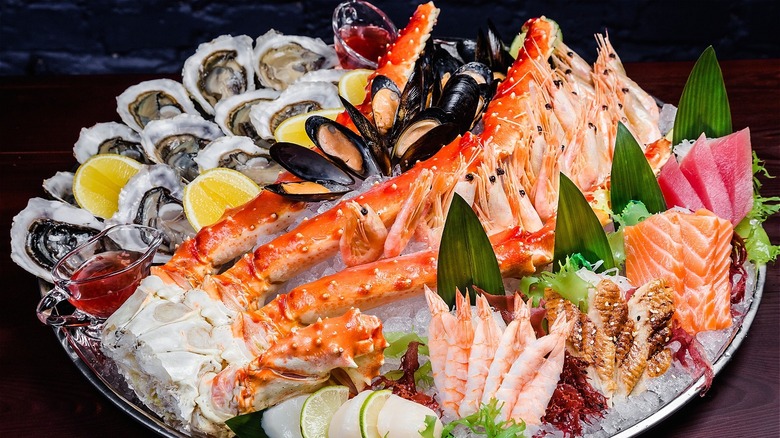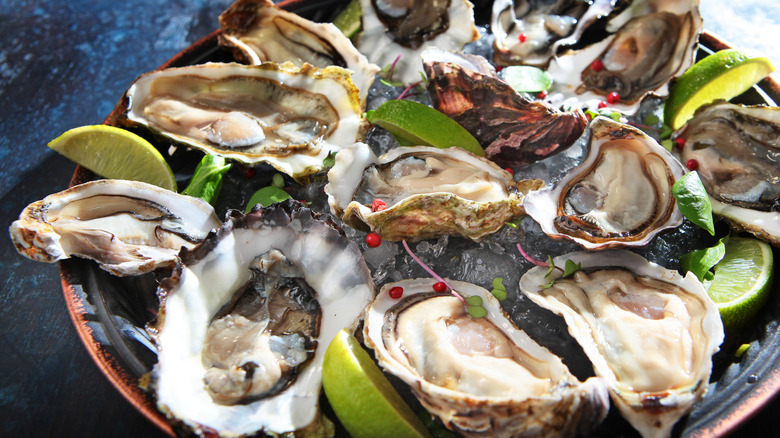Why You Should Never Order This Seafood More Than 100-Miles Away From The Coast
Whether it's date night or a meal with friends, chances are you want to enjoy something special when you eat out. There is something so luxurious yet wholesome about enjoying fresh seafood. Back in the day, you had to be near a coastal town to enjoy fresh seafood, but with modern seafood handling and transportation, you can enjoy seafood — even raw seafood — almost anywhere. The question is not if you can, but should you?
Before loading up at the raw bar, it may help to consider the journey the seafood took from the ocean to your plate. The Food and Drug Administration (FDA) issued guidelines for handling seafood to reduce the risk of foodborne illnesses and parasites. For raw seafood like sushi, they suggest freezing the fish to minus 34 degrees Fahrenheit and thawing just before serving. They also have additional guidelines for inspecting the fish. Be aware, the FDA guidelines for sushi are standards, not federal law. Actual regulations vary by each state, per Penn State Law Review. Fish that will be cooked doesn't require such a low temperature to stay fresh. Some fishing boats spend weeks at sea flash freeze and vacuum seal the fish right on the boat — a process that is much faster than your freezer at home and locks in freshness, per NPR.
With these practices, restaurants far from the coast may safely serve cooked seafood and even sushi. When it comes to certain types of raw seafood, though, you may want to think twice.
Is the world your oyster?
Cordon Bleu-trained chef Mark Nichols told Reader's Digest he wouldn't order raw oysters that were harvested more than 100 miles away from the restaurant. He says, "If handled and stored incorrectly, raw oysters can kill you." You see, oysters feed by filtering the water, so sourcing them from clean water is essential since they take in any toxins and bacteria. In fact, oysters are sometimes used to help clean up polluted bays, per Colorado State University. You just wouldn't want to eat those oysters! In fact, people sometimes catch diseases like norovirus from eating raw oysters that were exposed to sewage in the water, per CDC.
You may have heard advice to only eat shellfish, including oysters, in months with an "R" to help you to avoid shellfish harvested during "Red Tide" algae blooms due to potentially dangerous toxins, per MA Department of Public Health. The blooms don't strictly follow the "R" rule, but are most common when warm like late summer or early fall per Florida Fish and Wildlife Conservation Commission. Of course, these risks apply even to incorrectly sourced oysters if you are near the sea. Even when sourced responsibly, raw oysters carry risk when handled incorrectly from the moment it is harvested up until you eat it, per the Florida Department of Agriculture and Consumer Services. Everyone involved in harvesting, processing, and serving them needs to act with your safety in mind. This may be more likely with a knowledgeable seafood chef who is sourcing locally.

